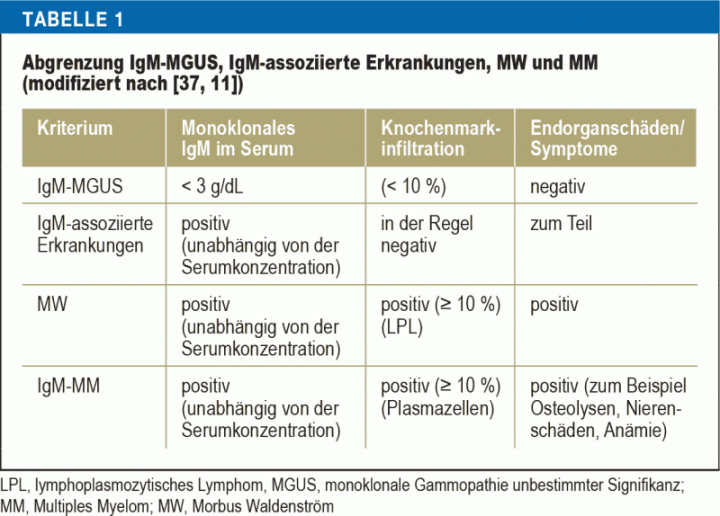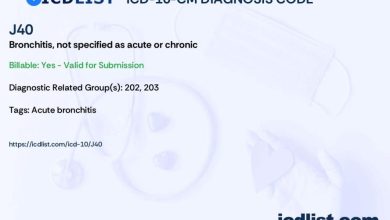Understanding ICD-10 Coding For Waldenstrom’s Macroglobulinemia
What is Waldenstrom’s Macroglobulinemia?
Waldenstrom’s Macroglobulinemia is a rare type of non-Hodgkin lymphoma that affects a type of white blood cell called B lymphocytes. It is characterized by the overproduction of a protein called immunoglobulin M (IgM), which can lead to the thickening of the blood and impair the normal function of the immune system.
Code Information

The ICD-10 code for Waldenstrom’s Macroglobulinemia is C88.0.
Diagnostic Related Groups (MS-DRG)

There is no specific MS-DRG related to Waldenstrom’s Macroglobulinemia.
Convert to ICD-9 Code

The ICD-9 code for Waldenstrom’s Macroglobulinemia is 273.3.
Code History
The ICD-10 code for Waldenstrom’s Macroglobulinemia was first introduced in October 2015.
Approximate Synonyms
Some approximate synonyms for Waldenstrom’s Macroglobulinemia include lymphoplasmacytic lymphoma, macroglobulinemia, and IgM monoclonal gammopathy.
Clinical Information
Waldenstrom’s Macroglobulinemia is a slow-growing cancer that primarily affects older adults. It is often diagnosed when routine blood tests reveal high levels of IgM in the blood.
Causes
The exact cause of Waldenstrom’s Macroglobulinemia is unknown. However, it is believed to be associated with genetic mutations in the B lymphocytes, which cause them to produce excessive amounts of IgM.
Symptoms
Some common symptoms of Waldenstrom’s Macroglobulinemia include weakness, fatigue, weight loss, enlarged lymph nodes, and symptoms related to thickening of the blood, such as blurred vision, headache, and dizziness.
Diagnosis
Diagnosis of Waldenstrom’s Macroglobulinemia typically involves a physical exam, blood tests to measure IgM levels, bone marrow biopsy, and imaging tests such as CT scans or MRI.
Treatment
Treatment for Waldenstrom’s Macroglobulinemia may include chemotherapy, immunotherapy, targeted therapy, and stem cell transplant. The goal of treatment is to reduce symptoms, slow the progression of the disease, and improve quality of life.
Conclusion
Waldenstrom’s Macroglobulinemia is a rare type of non-Hodgkin lymphoma that affects B lymphocytes and leads to the overproduction of IgM. It is diagnosed through a combination of physical exams, blood tests, and imaging studies, and treatment options include chemotherapy, immunotherapy, and stem cell transplant.
FAQs
1. Is Waldenstrom’s Macroglobulinemia curable?
While Waldenstrom’s Macroglobulinemia is not considered curable, treatments can help manage the disease and improve quality of life.
2. What are the risk factors for developing Waldenstrom’s Macroglobulinemia?
Risk factors for Waldenstrom’s Macroglobulinemia include age (usually diagnosed in older adults), gender (more common in men than women), and family history of the disease.
3. Can Waldenstrom’s Macroglobulinemia be inherited?
While there is no clear evidence that Waldenstrom’s Macroglobulinemia is directly inherited, there may be a genetic component that predisposes certain individuals to develop the disease.
4. How is Waldenstrom’s Macroglobulinemia different from other types of lymphoma?
Waldenstrom’s Macroglobulinemia is unique in that it is characterized by the overproduction of IgM, which can lead to symptoms related to thickening of the blood.
5. What is the prognosis for individuals with Waldenstrom’s Macroglobulinemia?
The prognosis for Waldenstrom’s Macroglobulinemia varies depending on the stage of the disease at diagnosis and the overall health of the individual. With appropriate treatment, many individuals with Waldenstrom’s Macroglobulinemia can









